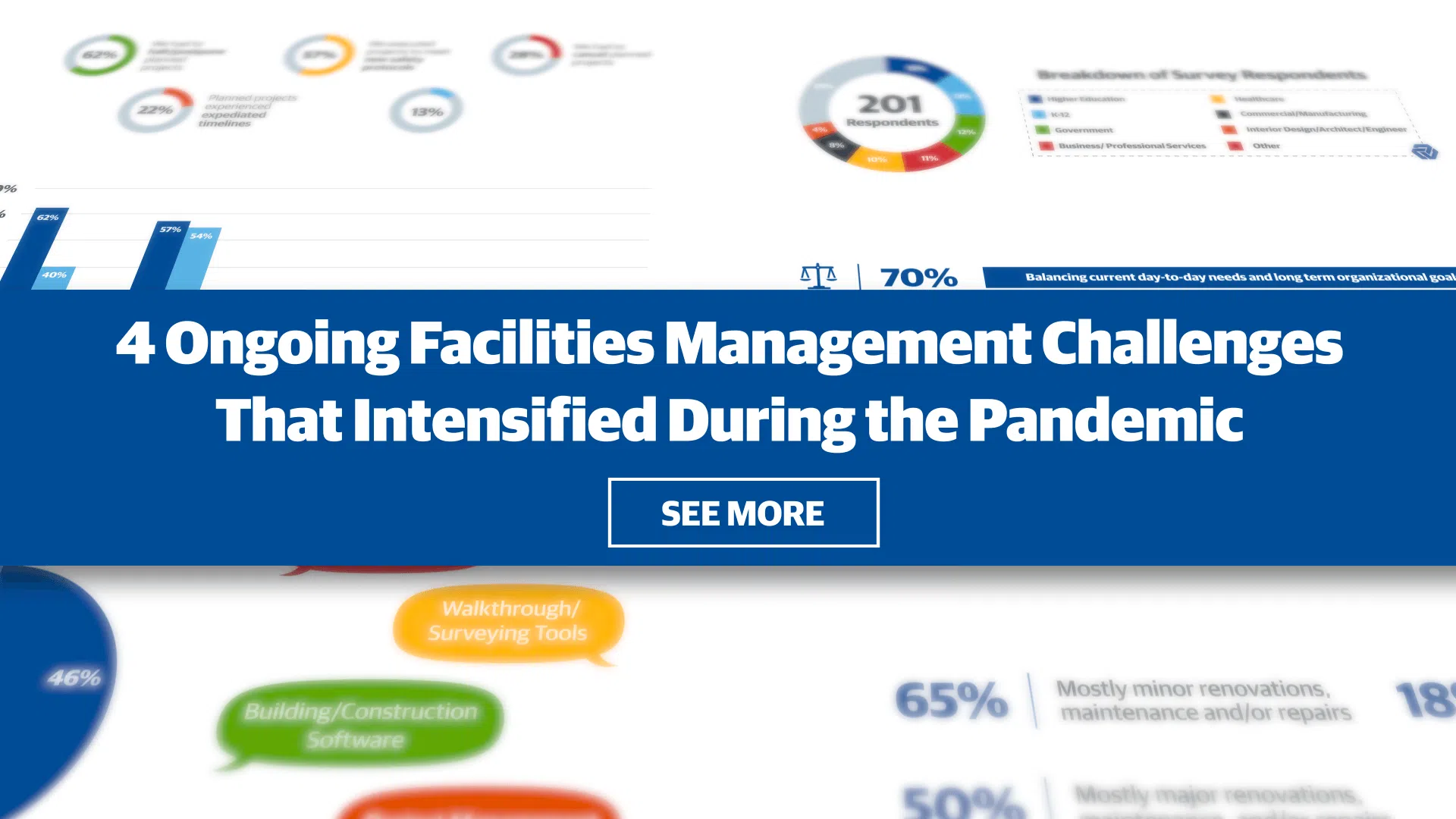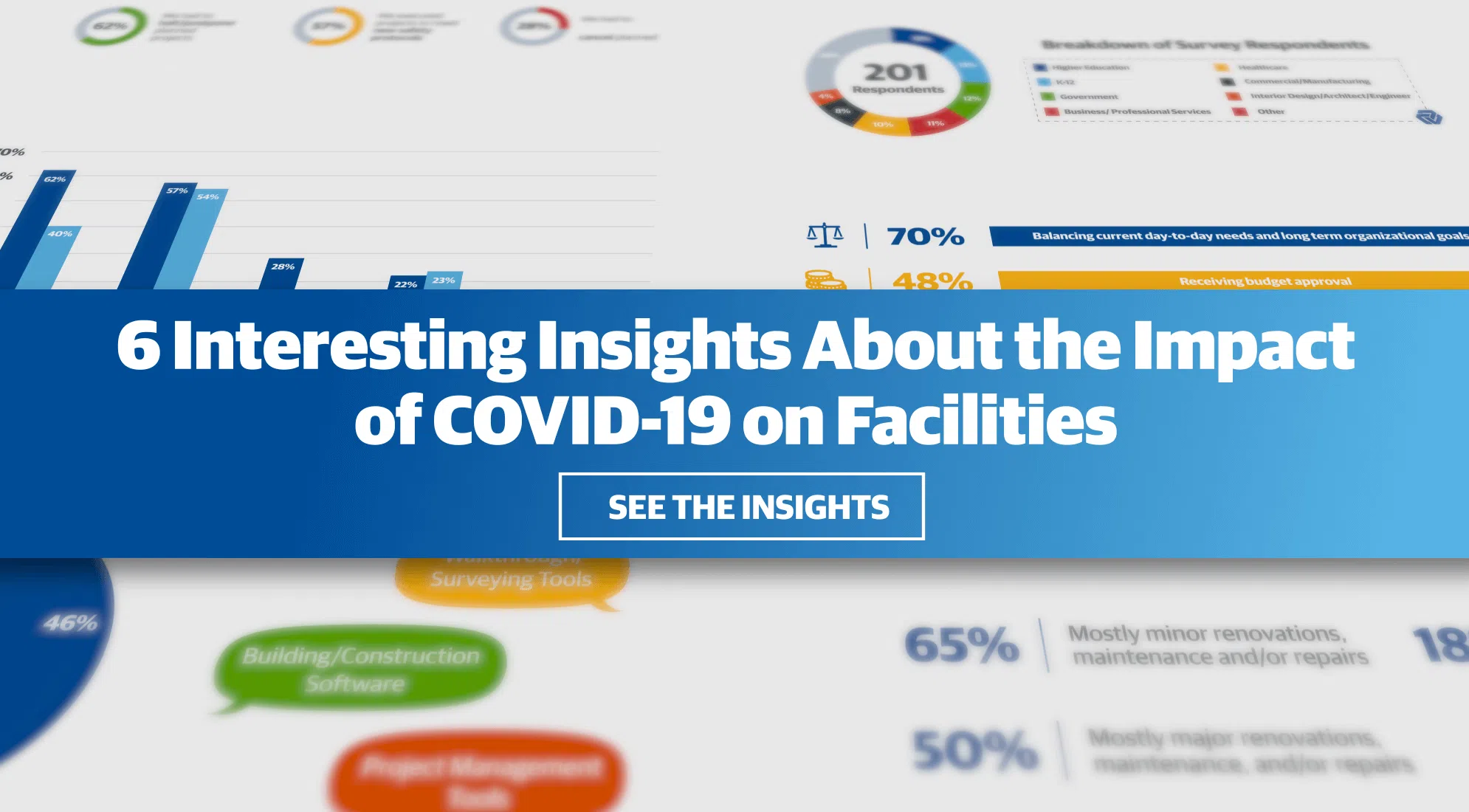Healthcare facilities are in the midst of a slow-burning resource scarcity crisis, as the injunction to “do more with less” has practically become an organizing principle for hospitals and care systems. For many, fighting resource scarcity has meant producing more while wasting less – assuring the lights and the air conditioning stay on but having little margin for comfort. For others, it has meant doing more work with fewer tools and less capital. Additionally, periodic Reductions in Force (RIFs) have placed extreme pressure on facilities teams to deliver a consistent level of service with fewer hands to carry the load and fewer experienced minds to problem-solve.
Healthcare’s resource scarcity crisis has almost always resulted in deferred facilities stewardship and ballooning backlogs of capital renewal and maintenance needs. Without a process change, the industry will find itself on a pathway to long-term failure. Factor in changing codes and regulations and the demands only grow more stringent. Evolving treatment modalities create new design requirements with more complex operations and systems, and the pandemic has added complex patient volumes. This nexus of circumstances adds up to a perfect storm that supports models for resources increases, not decreases. However; health facilities can chart a course through the mist and augment their dwindling resources by leveraging business and industry relationships.
The healthcare industry and its vendors need each other, and as the economy constricts, they will need each other even more.
Healthcare’s Tenuous Relationships with Vendors – And Why It Needs to Change
The mere suggestion of relying on businesses to help solve resource scarcity problems will make some in the healthcare industry squeamish. Vendors are often seen as self-interested and concerned only about the next sale. While it’s unfair to paint them all with a broad brush, vendors have earned this reputation through aggressive tactics. However; there is a clear need for routine acquisitions to assure that proper commodities are available when needed for replacement. Lightbulbs fail, filters get dirty and need to be changed, and trafficked space needs to be painted. Great relationships with lightbulb, filter and paint suppliers ensure those products are procured at the best rate and quality to meet facility demands. To their credit, many of the salespeople in commodity businesses are committed to meeting their customers’ needs, and many provide great service after the sale. The work they do is paramount to the success of the facilities team, and it supports institutions that have made it their mission to provide healthcare for their communities. Yet the truth of the matter is that applying this model at the commodities level alone does not do enough to rise to our current moment.
With facilities teams reduced to meet increasing financial pressures, and then further reduced by voluntary terminations associated with vaccine mandates, it’s time for service vendors to step into the role of valued business partners to assure their customers succeed and our healthcare institutions remain a viable element of municipal infrastructure.
The healthcare industry needs to make a culture shift in terms of relationship management. Facilities and operations teams must make it a priority to strengthen their bonds with the business community and form new partnerships built on truthful business interactions and integrity. The time is ripe for this change. The healthcare industry and its vendors need each other, and as the economy constricts, they will need each other even more.
Managing facilities in a resource-scarce environment can be incredibly rewarding or frustrating depending on how these relationships are nourished. Whether selling facility commodities, data and services, marketing or consulting, it’s time for service vendors to become valued business partners and assure their healthcare customers maintain the consistency and constancy required of them. Shared solutions and resource management must become part of the new normal for successful health facility management.
Understanding Resourcing and Shared Services
In its simplest form, shared services are relationships based on continuing support and reliance, not the next transaction. It’s a willingness to do what’s right, regardless of whether or not it involves additional billable services, to assure the customer is fully supported. From the healthcare facility’s perspective, it’s the willingness to operationalize new processes that include a more involved business partner experience. Both sides have to give a little to generate mutually-beneficial outcomes.
Historically, resourcing has primarily meant reducing facility team exposure to high-risk activities, such as exterior window washing, elevator maintenance and roof repairs. In some cases, care facilities fully outsource the work, but in most cases, the less challenging work is completed by institutional staff. Environmental Services may clean the interiors of windows, but a business partner would be hired to clean high bay windows and their exteriors. Maintenance staff might take on roof flashing repairs and emergency work to stop leaks while resourcing with a business partner for significant repairs and replacements. Elevator work is generally performed by qualified elevator service companies, but owners will take care of simple activities like changing lights and cleaning cabs. Major boiler and chiller repairs are usually under contract with a qualified business partner, and maintenance will take on the less complex routine activities. These are traditional resourced relationships utilizing shared services to maintain facilities assets.
Shared Services and the Resource Scarcity Crisis
The shared services model provides an opportunity to fulfill departmental responsibilities by resourcing business partner expertise to meet new challenges like resource scarcity. Resourcing in healthcare is not new, but depending on it to level-set demand, supplement staff shortages, reduce stress and assure quality outcomes is a novel approach. A small percentage of institutions around the country were on-board with this type of resourcing before the pandemic tightened budgets further. Since then, these institutions have been quick to further leverage the resourcing opportunity to include planning, design and construction activities.
Shared services and resource management expands the current commodities vendor/client model across the planning, design, construction and facilities operations continuum. In the past, a fuller slate of projects generally meant enlisting support from local contractors to handle the workload. However; if an institution was working to reduce cost, in-house maintenance personnel were used instead of mechanical, electrical and plumbing contractors to provide a more cost-effective delivery. Project schedules and difficulties maintaining delivery dates are typical challenges associated with in-house solutions, along with finding the broad competencies required to complete more complex projects. Innovations in these areas include project management support from industry partners and more recently, Job Order Contracting (JOC) to assure procurement is modified to meet the high demand and tight delivery schedules.
Job Order Contracting: An Ally in the Battle Against Resource Scarcity
Job Order Contracting is new to healthcare, but not new to the construction industry. In use since the 1980s, JOC is an indefinite delivery, indefinite quantity (IDIQ) procurement method that allows many projects to be completed with a single, competitively-awarded contract. Recent innovations include scaling the JOC model for larger IDNs to allow procurement by region rather than by institution. Under these models, the procurement office assures that respondents represent a qualified and capable selection of general contractors, mechanical, electrical and plumbing sub-contractors within the region who meet institutional work rules for infection control and working in occupied areas. The more sophisticated JOC solutions are based on pre-priced task catalogs of unit costs, like Gordian’s Construction Task Catalog®, and the provider works with the owner to initiate work, assure the scope of work is properly defined, review the Price Proposal for accuracy and assist the owner with validation of documentation. A best-in-class JOC program is the platonic ideal of a shared services model and can help owners shore up their scarce resources.
Overcoming Resource Scarcity in the Healthcare Industry
Shared services and resource management are important tools for stemming the out-going resource tide and achieve an owner’s construction project requirements in both good and bad markets. By creating relationships with trusted partners from the business community, health facilities can make the most of what they have and who they have on campus, all while assuring the delivery of quality care.







